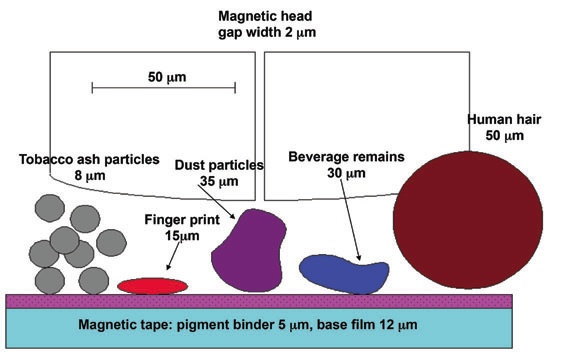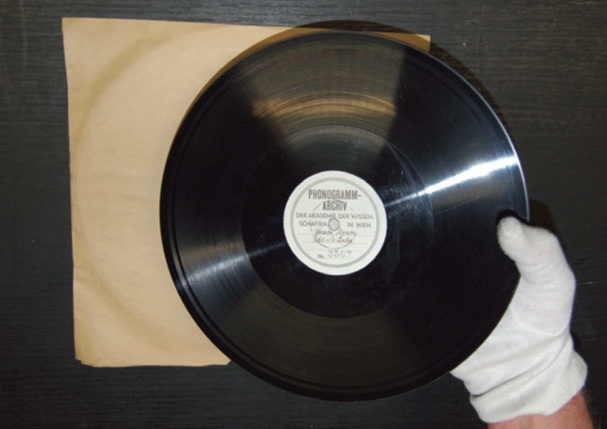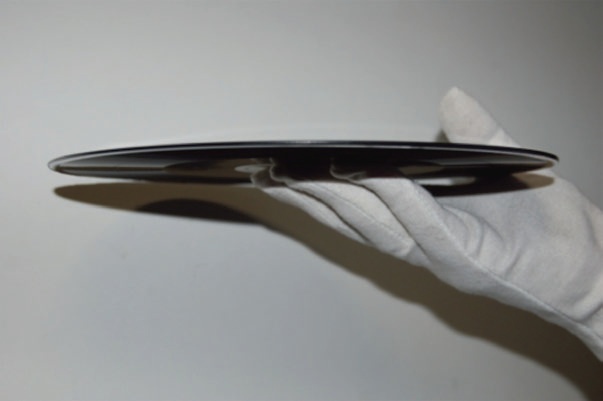3.5 Dust, foreign matter, (air) pollution, pests
3.5.1 Effects. Dust and foreign matter have a variety of effects on audiovisual carriers: with mechanical carriers they cause deviations of the stylus, resulting in audible artefacts (clicks). With magnetic tape, dust and foreign matter can clog the replay head and prevent intimate tape-to-head contact which, in audio, causes high frequency loss and, in video, the swift breakdown of the signal. With optical discs, the reading laser is obstructed which may lead to un-correctable errors and, eventually, muting.

Figure 25: Proportion of foreign particles of different size obstructing intimate tape-to-head contact.
3.5.2 Origin and prevention. One of the major origins of dust pollutants is mineral dust. This is a particular problem in arid countries. Archives in such locations must be equipped with tightly sealed windows and doors, which may need enhancement by air locks at entrances. Another prominent source in urban environments is textile particles. Carpeted floors as widely used in offices in the 1970s are, therefore, absolutely forbidden throughout the entire audiovisual archive. Floors should be of concrete, covered or sealed with chemically inert materials or lacquer, or of non-abrasive minerals (terrazzo-type). The floor should be of a colour that makes the typical local dust visible and does not camouflage it. Dust prevention is best achieved by mechanical filters in the air conditioning equipment. Additionally, a slightly higher pressure in storage and laboratory areas helps prevent the intrusion of dust into sensitive areas by creating an airflow out of the building through any cracks etc. in the walls.
Apart from minimising dust in storage and handling environments as a general measure, protection for individual carriers should be in line with considerations discussed in 4.7. Even under good general conditions, the residual risks of dust intrusion should be minimised by keeping the time that carriers are not in their appropriate containers during use as short as possible. LPs should be stored by having the inner and outer sleeve openings at different positions. In the absence of a disc, loading trays of optical discs players out of use must be kept close to prevent dust deposit that would contaminate discs.
Fingerprints make dust problems worse. They act as a glue for dust and provide nourishment for fungi. Touching playing surfaces with bare fingers must be absolutely forbidden: the use of lint-free cotton gloves is strongly encouraged. Special care is needed, when taking analogue discs out of their sleeves and putting them back, to avoid touching their surface in the grooved area. Turning disks around needs also manual skill and training.


Figures 26 and 27: Holding a disk without touching the grooved area.
Food and drink, especially sweetened soft drinks, are a major threat to all carriers, specifically to magnetic tape cassettes. Eating and drinking is, therefore, absolutely forbidden in all rooms where audiovisual carriers are handled or stored.
With magnetic tape, there are also problems that come from within the tape: dry abrasion (mainly with old CA tapes), exuded lubricants, and smear from hydrolysed tapes constitute major, internally generated obstruction to the replay of deteriorated tapes. Before their replay, such tapes need treatment and cleaning (IASA-TC 04, 5.4.3).
3.5.3. Air pollution, specifically industrial gaseous waste, can affect audiovisual carriers in many ways. There are indicators that suggest that heavy industry gases may have a negative influence on magnetic tape condition.17 It may be assumed, on the other hand, that environments that meet modern standards, which are set in the interest of human health, will not be immediately harmful to audiovisual carriers. Should archives be in the vicinity of industrial areas, however, it may be wise to consider appropriate air filtering. In addition, the exposure of materials to fumes caused by refurbishing work such as painting or gluing must also be critically considered. Appropriate measures have to be taken to avoid any (prolonged) exposure to such vapours. Finally, the residues from tobacco smoke build up on the surface of carriers and equipment, e.g. optical disc player lenses. This is another reason in addition to the risk of fire, to ban smoking, particularly in view of modern high data density formats.
3.5.4 Pests. Tropical areas, in particular, suffer from many forms of insects and pests which are difficult to keep out of laboratories and archives. Generally, most threatened are paper materials associated with audiovisual carriers, such as LP covers and liner notes. There is also a tendency for termites and other small bugs to creep into cassettes. No specific prevention can be given except keeping laboratories and storage areas as sealed as possible. Any chemical prevention should take possible interaction with carriers into consideration. Fumigation, as generally applied in tropical (paper) archives to fight insect affected paper materials, is discouraged because of the unknown possible interaction with carrier components, especially of magnetic tapes.
17. Professional video tapes from the same batch were stored under same temperature/RH conditions in Austrian TV archives in Vienna and Linz. The tapes from Linz, an industrial town with considerable air pollution problems at the time, suffered from significant pigment binder breakdown, the Vienna tapes did not. Although professionally investigated, the phenomenon could not be consistently explained.

